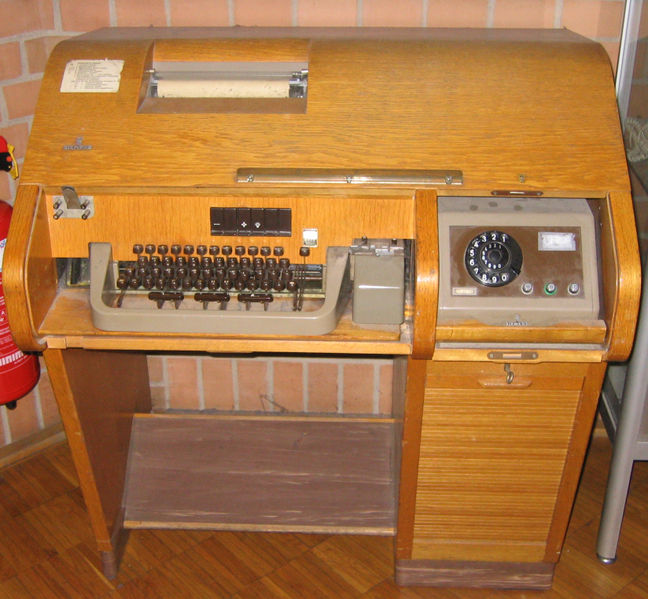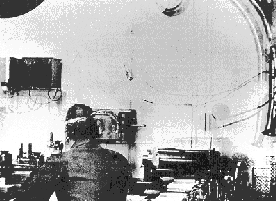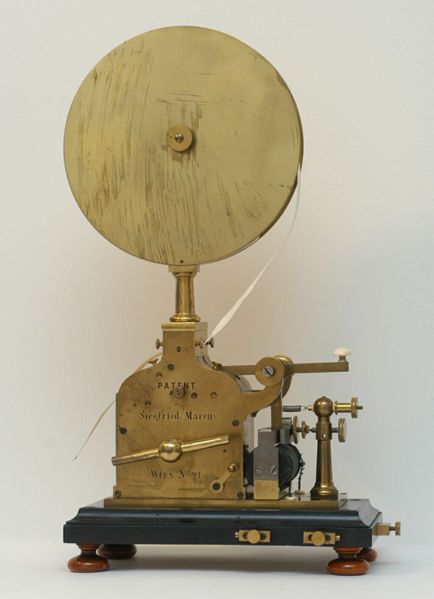The first email
If asked when the first phone call made, would you refer to the first cell phone? Of course you would say, there were more primitive phones long before that, and probably even remember using them.
With email that should be the same. I do not see why only the use if the @-Symbol makes it an email. Long before that, there were just numbers in use. Also I do not see, why email has to be send via the internet. I remember very well the first Hewlett Packard Email system, I saw it first time in operation in 1986, on my own desk, and we had no internet. The connection was via telephone lines, and it worked just like any other email program we use today. Those telephone lines, the user did not have to worry about, and these were dynamic (changing) connections. So there was always an open telephone connection (for instance) between Hewlett Packard Berlin and Hewlett Packard San Francisco. But also round the clock a connection between Hewlett Packard Berlin and Munich. So when a person from the Munich office send an email to any person worldwide, it would follow a dynamic (not fixed) path via the globe, which sender and receiver could not see or track. This Email system could send text messages and attachments.
So of course, TODAY we send email via the internet, we make even phone calls via the internet, but same as phone calls were made before the internet, email was send already before the internet just as well.
 Email is nothing but an electronically send mail. There was such an machine called TELEX. At the sender side, you could send a message in a terminal, and at the receiver side was a printer. Sender and receiver could be any person worldwide, provided they had an email address, called TELEX Number. There was no delay in sending and receiving that EMAIL, as these where coded, and send via worldwide telephone system, and here too the path was dynamic. So the telephone companies always kept lines open, and the users were allowed access only very short, during the time of data transmission. This access invisible for the users, all they had to do, was press "send" and two second later, a printer at the receiver's office would print it. There is little difference with any modern email. Look at this nice stamp from East Germany, with a man writing an email on a TELEX machine.
Email is nothing but an electronically send mail. There was such an machine called TELEX. At the sender side, you could send a message in a terminal, and at the receiver side was a printer. Sender and receiver could be any person worldwide, provided they had an email address, called TELEX Number. There was no delay in sending and receiving that EMAIL, as these where coded, and send via worldwide telephone system, and here too the path was dynamic. So the telephone companies always kept lines open, and the users were allowed access only very short, during the time of data transmission. This access invisible for the users, all they had to do, was press "send" and two second later, a printer at the receiver's office would print it. There is little difference with any modern email. Look at this nice stamp from East Germany, with a man writing an email on a TELEX machine.

Original TELEX MACHINE
Before the Telex, you could also send a telegram. I remember I sending those myself still in 1990 still, via the post office. It's a text message which gets send electronically to any post office worldwide, from there printed, and hand-carried to the receiver.
Now look what I found here. This is the telegram alias of the Neuberger company. Click on the picture and you'll see they nicely reserved the alias Voltmeter. This is Email in 1935, and their alias was "Voltmeter".
 Even the messages of the Titanic were send via email, from the ocean. Such messages had a text content only, and the path of the message was unknown. Unlike people think, the Titanic did not just transmited directly to New York. They just transmitted the message into the air, and some other ship would pick it up, and by hand repeat it. So would the next, until in the end it gets received by a land station. This picture is from the original transmitter room. Mind you that was before the invention of electron tubes. Isn't that amazing? They used extremely powerful electric sparks, where each spark caused a short resonance of a tuned circuit, with a tuned antenna. This allowed signal bursts of many kilowatt. Such a signal burst was received by something weird like a coherer. This is nothing but a tine glass pipe filled with iron particles, which changes it's resistance of exposed to radio signals. The change of resistance had an avalanche effect, and in the end, the coherer is only "on" of "off". So this could immediately operate a relay. The sending person would operate the Morse key, and at the receiving end, the relay would produce "ticks" which could either be heard by the receiver, or written down electrically with a pen on a paper roll. What makes it so similar to today's email, is the path is unknown at the moment of sending. The Titanic would transmit for instance a message to the Major of New York, but the distance across the ocean was too long. Other ships would however receive the message, and offer to forward it. So the message would soon be written down by some ship somewhere. Then the next ship, etc, and after some 10 so ships, it arrived at the New York Coast guard office. From there the message would reach him soon. Not the fastest way, and a lot of actions "by hand" but this was electronic data transmission. This form of email was very expensive for the sender, and in fact this was one of the reasons of the sinking of the Titanic. A near by ship heard the radio transmissions, which hold coordinates and time, and they noticed the Titanic was full speed ahead to a place full of ice bergs, and it was reported this was not possible what they were doing. This fisher boat send out warnings, but the Titanic operator did not notice, because he was transmitting personal messages (email!) for rich persons, which kept him busy doing so, that fatal evening.
Even the messages of the Titanic were send via email, from the ocean. Such messages had a text content only, and the path of the message was unknown. Unlike people think, the Titanic did not just transmited directly to New York. They just transmitted the message into the air, and some other ship would pick it up, and by hand repeat it. So would the next, until in the end it gets received by a land station. This picture is from the original transmitter room. Mind you that was before the invention of electron tubes. Isn't that amazing? They used extremely powerful electric sparks, where each spark caused a short resonance of a tuned circuit, with a tuned antenna. This allowed signal bursts of many kilowatt. Such a signal burst was received by something weird like a coherer. This is nothing but a tine glass pipe filled with iron particles, which changes it's resistance of exposed to radio signals. The change of resistance had an avalanche effect, and in the end, the coherer is only "on" of "off". So this could immediately operate a relay. The sending person would operate the Morse key, and at the receiving end, the relay would produce "ticks" which could either be heard by the receiver, or written down electrically with a pen on a paper roll. What makes it so similar to today's email, is the path is unknown at the moment of sending. The Titanic would transmit for instance a message to the Major of New York, but the distance across the ocean was too long. Other ships would however receive the message, and offer to forward it. So the message would soon be written down by some ship somewhere. Then the next ship, etc, and after some 10 so ships, it arrived at the New York Coast guard office. From there the message would reach him soon. Not the fastest way, and a lot of actions "by hand" but this was electronic data transmission. This form of email was very expensive for the sender, and in fact this was one of the reasons of the sinking of the Titanic. A near by ship heard the radio transmissions, which hold coordinates and time, and they noticed the Titanic was full speed ahead to a place full of ice bergs, and it was reported this was not possible what they were doing. This fisher boat send out warnings, but the Titanic operator did not notice, because he was transmitting personal messages (email!) for rich persons, which kept him busy doing so, that fatal evening.

Patented Machine to receive and print Email
Sending electronically coded text, was first done in 1832, before the invention of the electron tubes. When Mr. Marconi invented the Morse code, this was a break through. Morse is what information technology calls a tri-state code. So not digital, but three conditions. If you analyze how Morse works, you will note it is a genius system, dealing with the problems of a bad signal path in a clever. Original Morse worked with "pips" only. They could transmit a "radio" signal all over the world, without radios or electron tubes! How did that work? A person named Hertz discovered the LC resonator effect. (So a coil in parallel with a capacitor). At that moment having no clue what caused it, or what electrosn are. He just let flow DC current through the coil, and when switching it off, "it" happened. He found there was a short and very powerful resonance burst. Imagine he found that out when electricity was unknown. The resonance was in the range of a few hundred kilohertz. For him this was only an unexplainable effect, and a young man named Heinrich gave his own name "Herz" to what we later called a frequency.